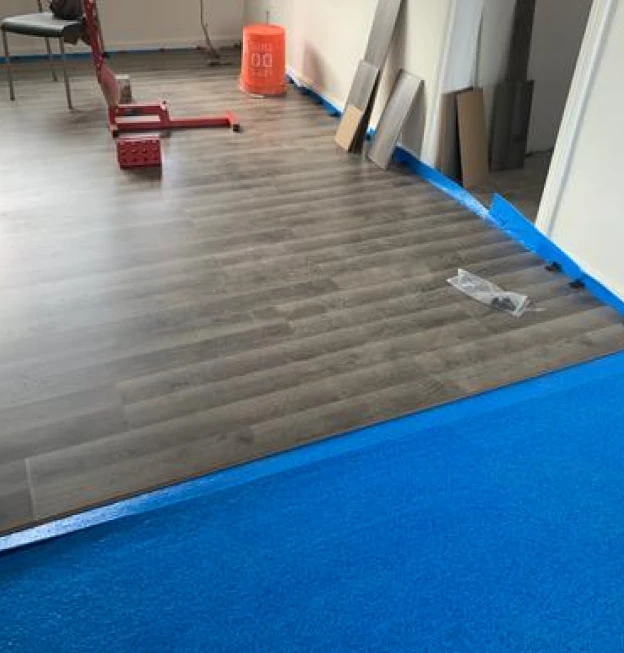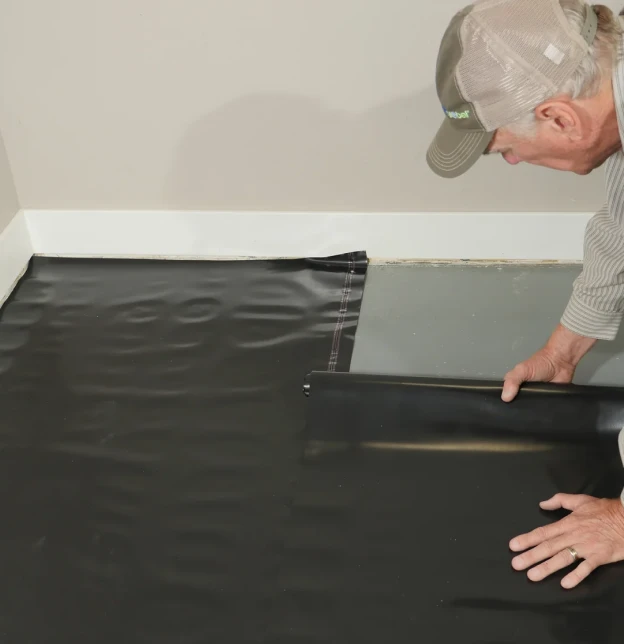Moisture Barriers Atlanta
Moisture is one of the biggest causes of floor failure. It warps wood, breaks down adhesives, and creates costly repairs. In Atlanta’s humid climate, the risk is even higher.
Our moisture barriers work beneath hardwood, engineered wood, and vinyl to block moisture from rising into your flooring. We help contractors and homeowners find the right solution for long-term floor performance.
Available options include:
- Loba
- Pallmann
- Fortifiber


Overlay Flooring Moisture Barriers Atlanta
Installing a new floor? You need more than just underlayment. You need a barrier that keeps moisture from creeping up and destroying your work.
We supply overlay sheets that roll out quickly and create a physical layer of protection. These are ideal for plywood or concrete subfloors that face high humidity or below-grade conditions.
Top-performing brand:
- Aquabar
Roll-On Moisture Barriers Atlanta
When dealing with concrete subfloors, liquid moisture barriers are often the better choice. These products form a tight seal that covers every crack, pinhole, and uneven surface.
They’re especially useful for basements, gyms, and areas where water vapor is a serious issue. We supply only tested, contractor-trusted brands that cure evenly and perform over time.
Product we supply:
- Wakol PU 280
How Our Barriers Keep Floors Strong in Atlanta
Humidity levels in Atlanta change throughout the year. Our vapor barrier for wood flooring
Atlanta helps floors stay flat, firm, and beautiful despite the weather.
TESTIMONIAL
Finish Every Project With Expert Moisture Barrier for Wood Floors Atlanta
Choosing the wrong barrier can cost time and money. That’s why we don’t just sell products. We guide you toward the best choice for your space, subfloor, and timeline. Moisture issues don’t announce themselves. They show up after the damage is done. Rustic Wood Floor Supply Atlanta-based team helps you pick the right barrier before it costs you the job.
Don’t Let Subfloor Moisture Undo Your Work. Seal It Right the First Time





